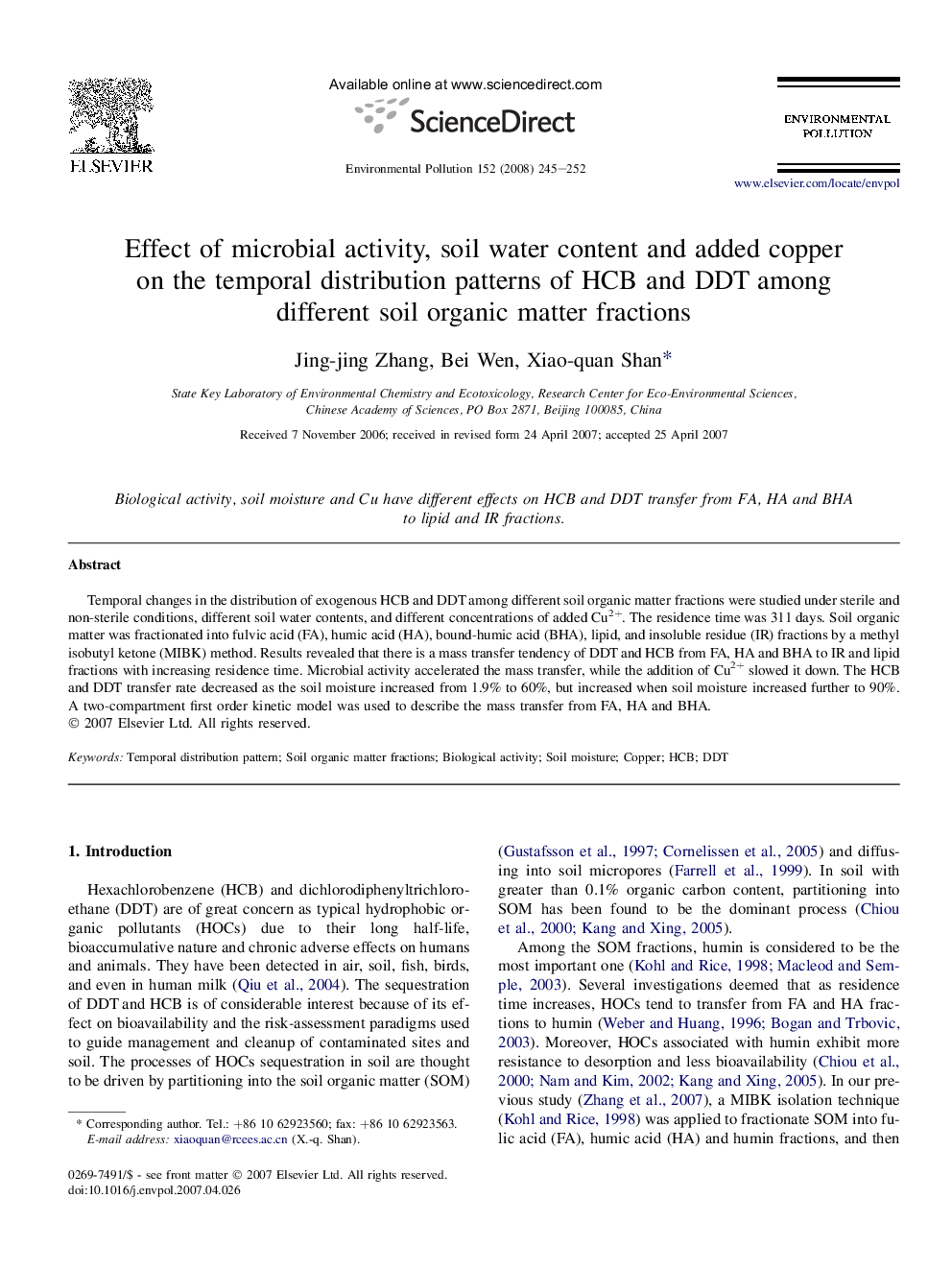| Article ID | Journal | Published Year | Pages | File Type |
|---|---|---|---|---|
| 4426955 | Environmental Pollution | 2008 | 8 Pages |
Temporal changes in the distribution of exogenous HCB and DDT among different soil organic matter fractions were studied under sterile and non-sterile conditions, different soil water contents, and different concentrations of added Cu2+. The residence time was 311 days. Soil organic matter was fractionated into fulvic acid (FA), humic acid (HA), bound-humic acid (BHA), lipid, and insoluble residue (IR) fractions by a methyl isobutyl ketone (MIBK) method. Results revealed that there is a mass transfer tendency of DDT and HCB from FA, HA and BHA to IR and lipid fractions with increasing residence time. Microbial activity accelerated the mass transfer, while the addition of Cu2+ slowed it down. The HCB and DDT transfer rate decreased as the soil moisture increased from 1.9% to 60%, but increased when soil moisture increased further to 90%. A two-compartment first order kinetic model was used to describe the mass transfer from FA, HA and BHA.
